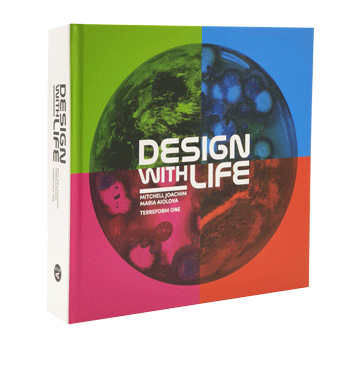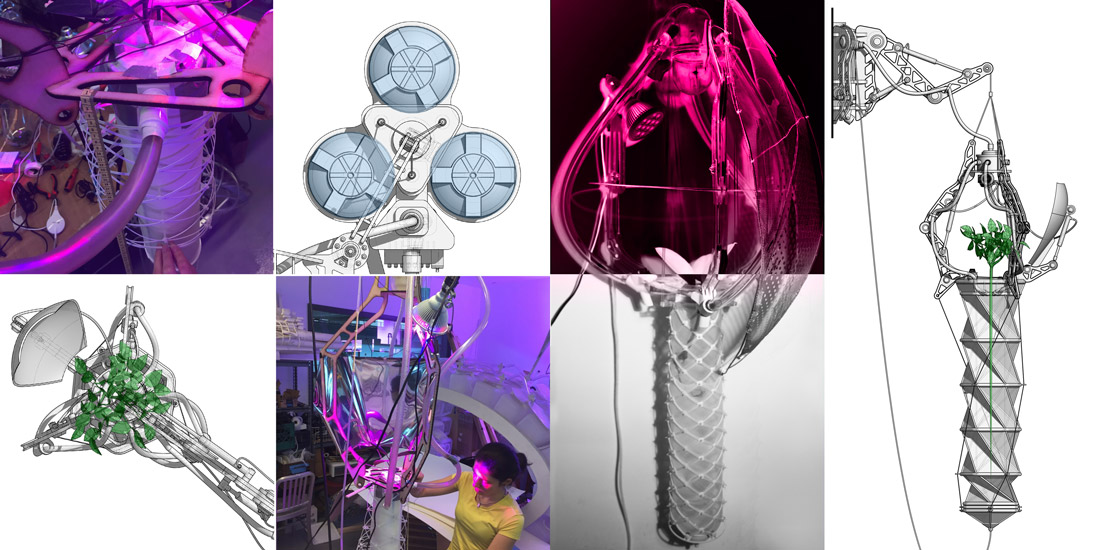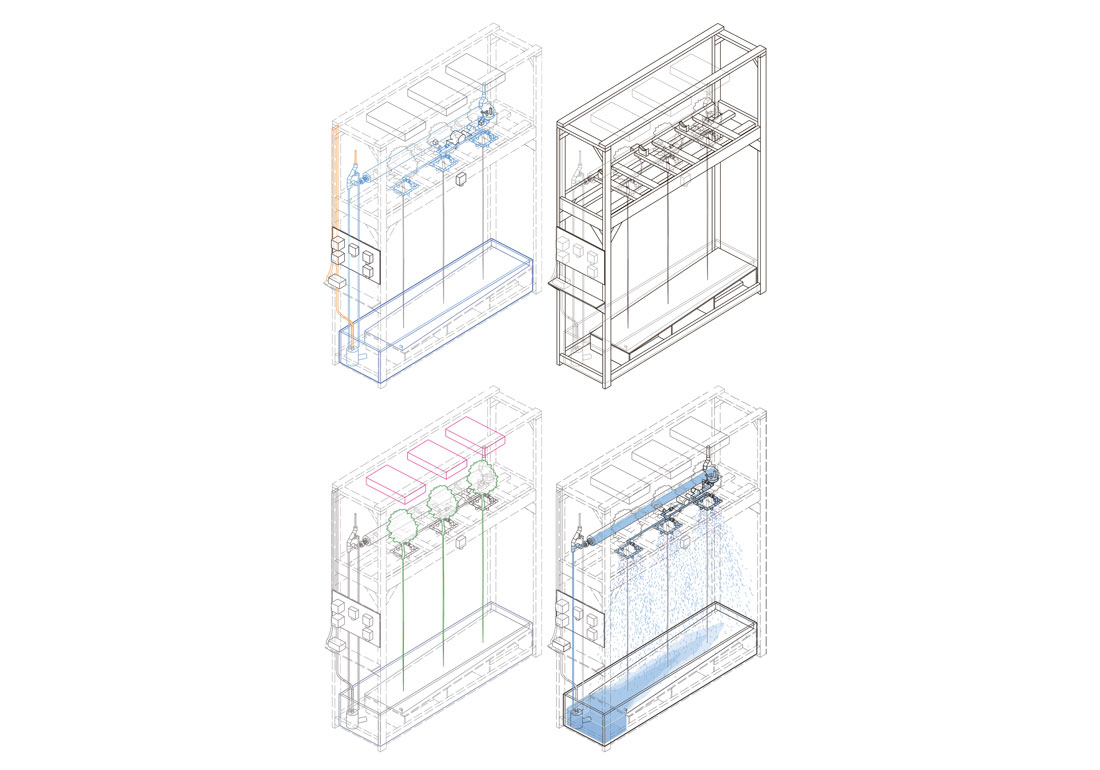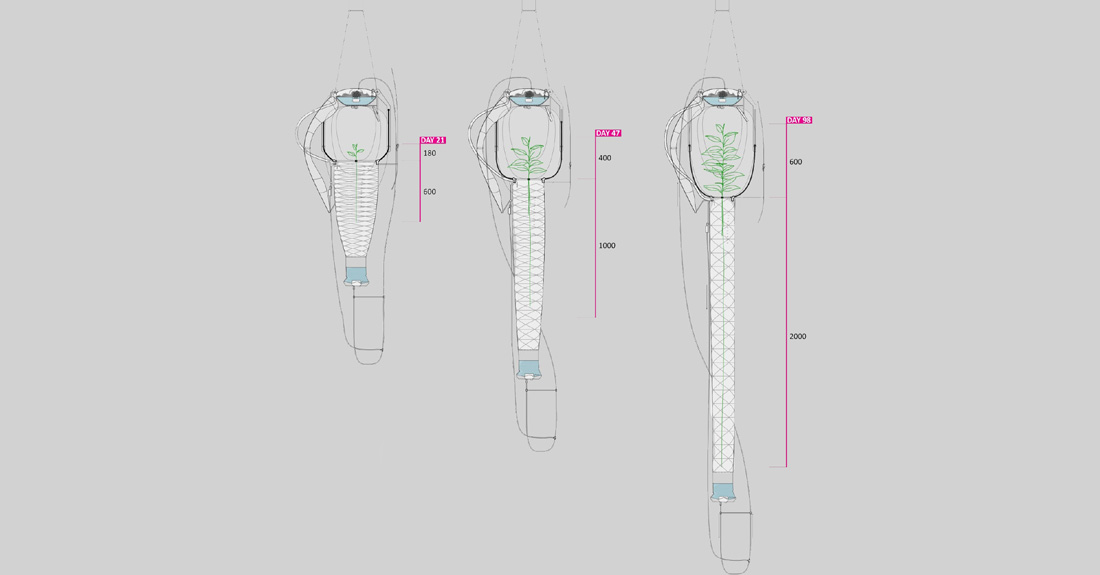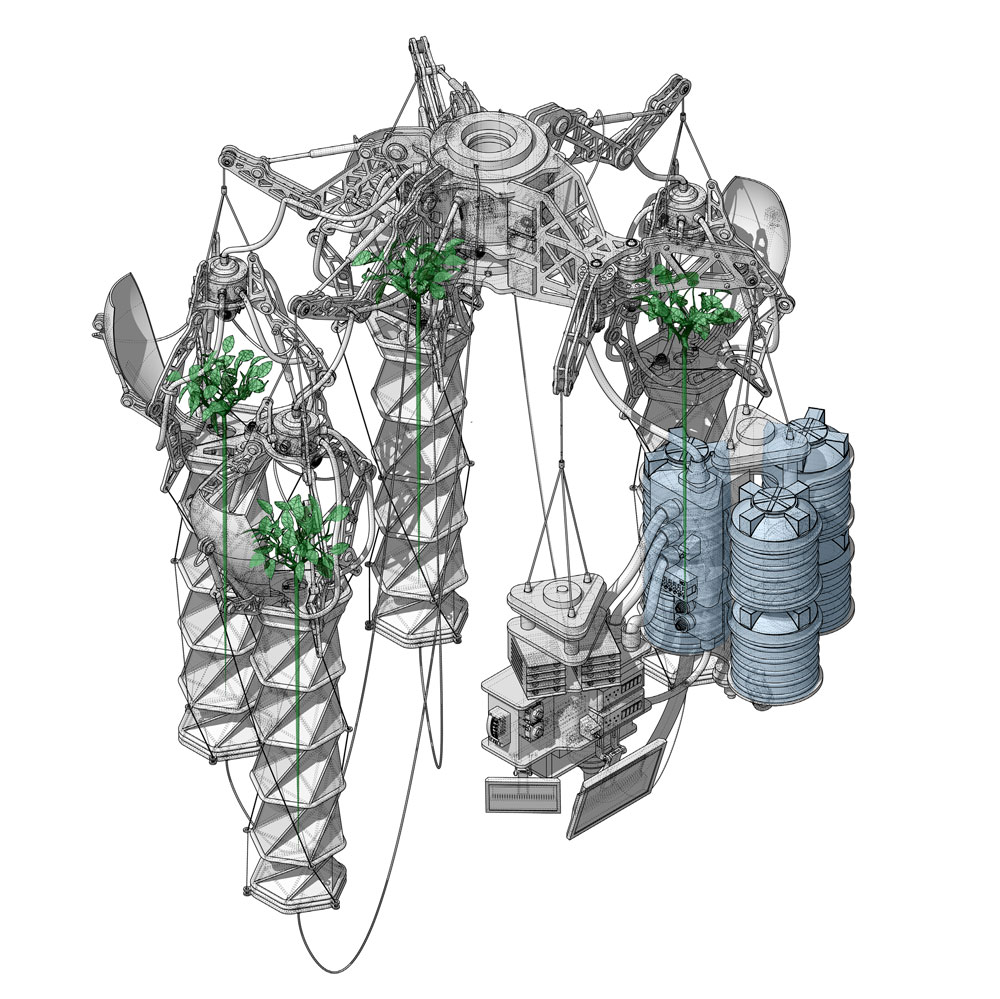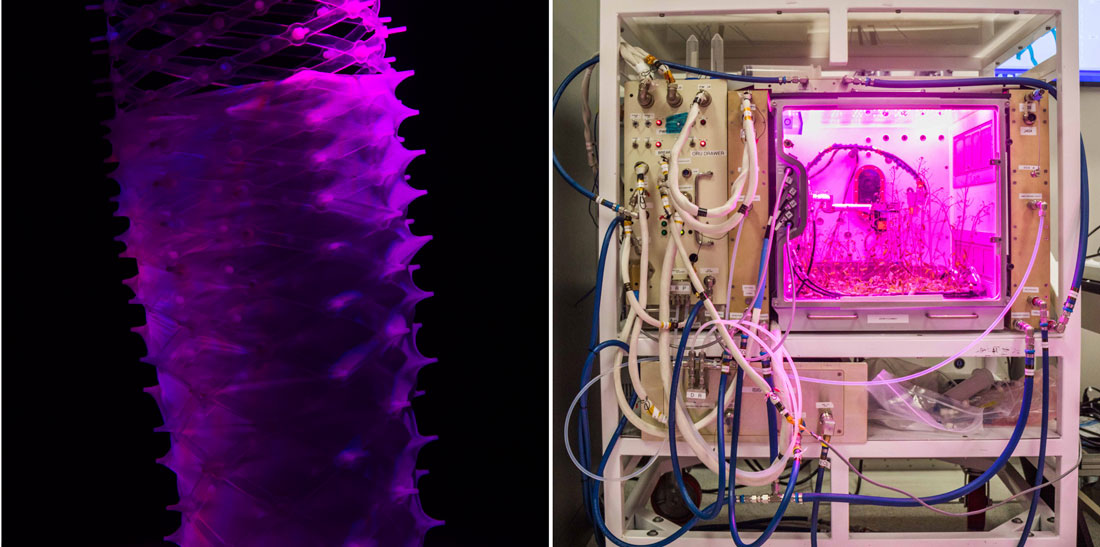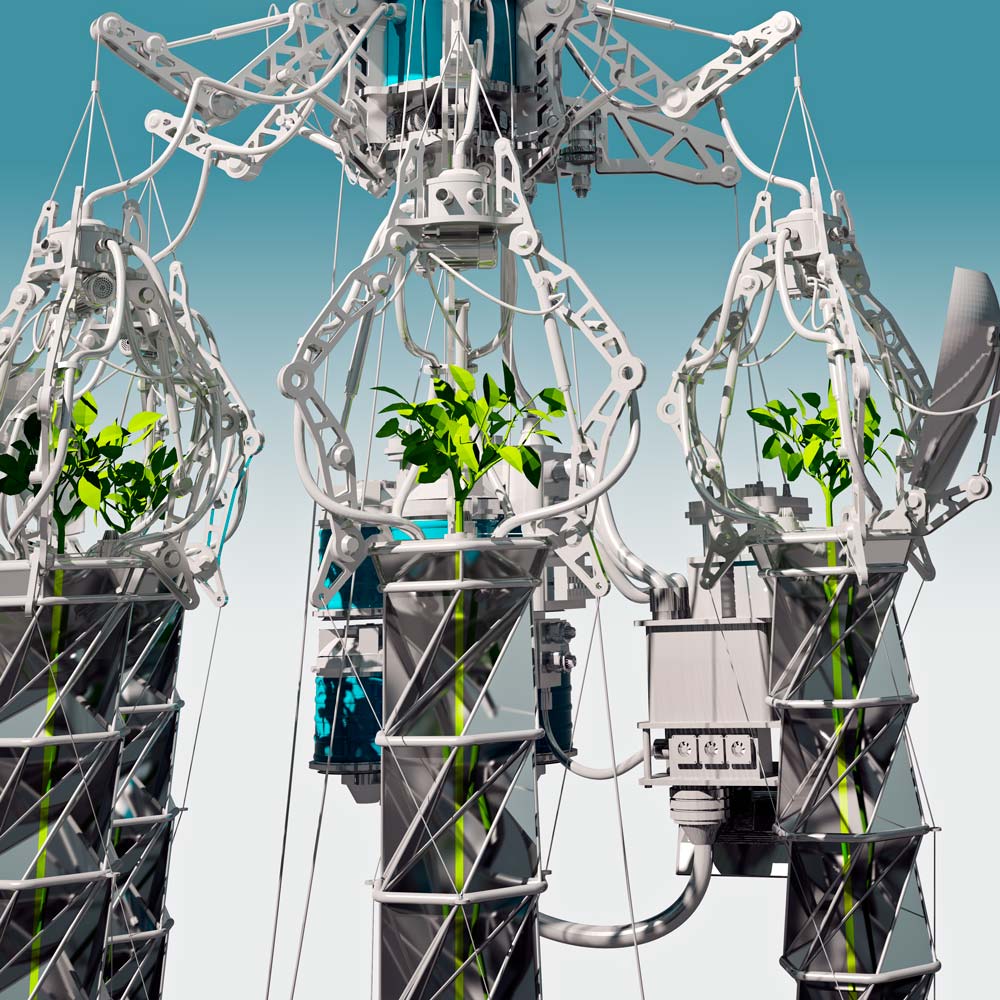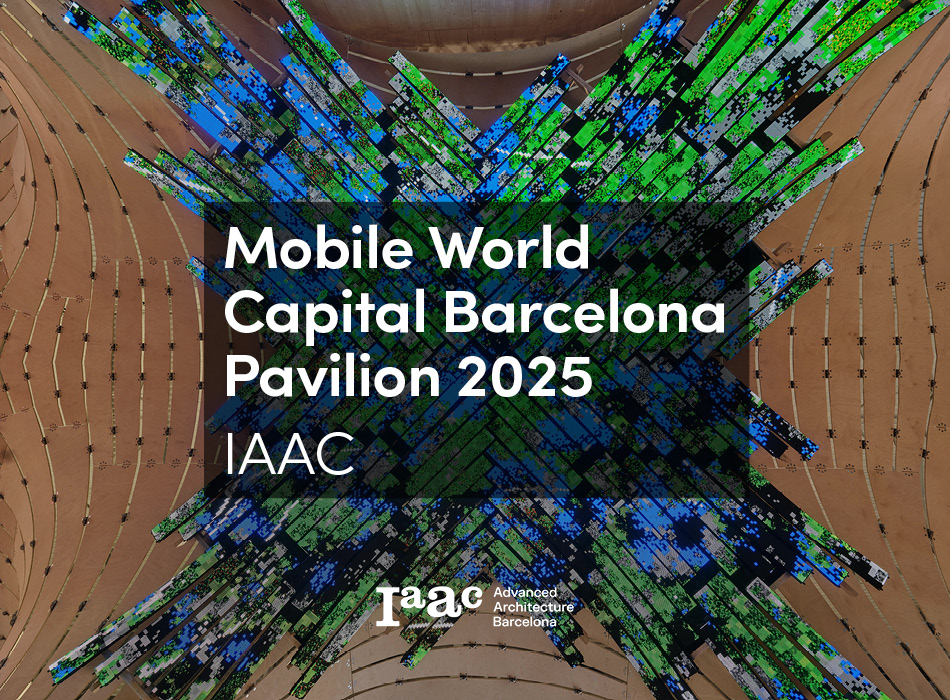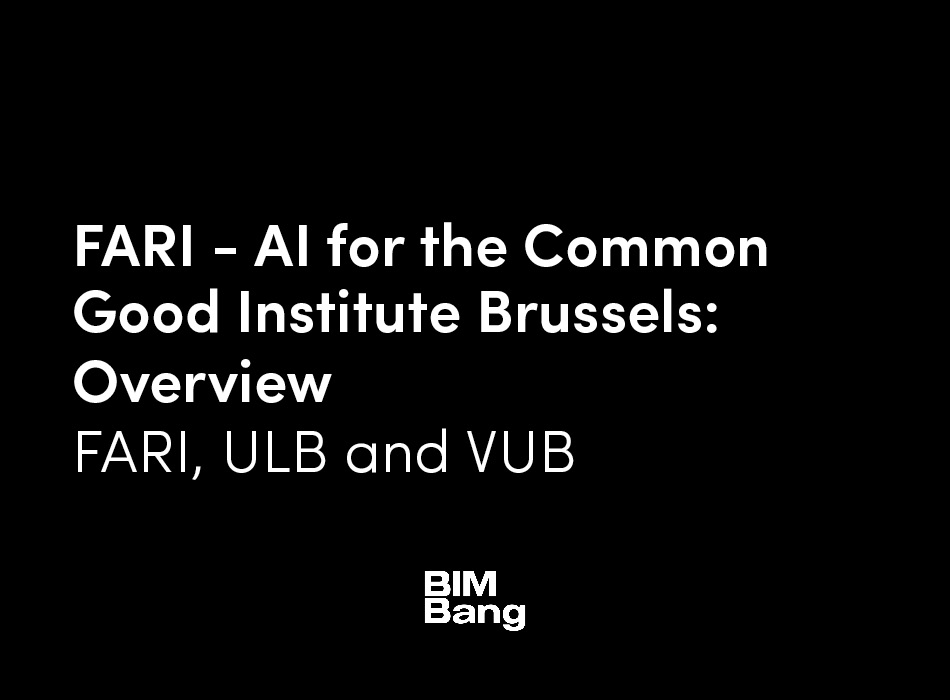As a continuation of the research into growing soft roots for use in living structural applications, we intend to design and fabricate a lightweight, modular alternative to the aeroponic system constructed with Treenovations in June 2016. Conceptualized as an individual ‘spacesuit’ for each plant, this apparatus generates and maintains a precisely conditioned adaptable environment in which growth can be promoted, monitored and controlled. Utilizing more sophisticated materials and technologies enable this system to become a transportable and deployable solution for growing programmable architectures on-site, as well as a smart monitoring device linked to an online database of life cycle analyses – aiming to iterate, discover and optimize the environmental conditions for maximally accelerated root growth over generations of plants. The eventual aim is to develop a living structural system, from which entire architectures can be ‘grown-to-order’; pleaching the individual trees to form a composite structure.
Data Capture
The LIVEWARE functions as a data capture environment, recording the plant’s biometrics as it develops, as well as the input parameters for growth. Over many iterations of this process, a comparative feedback process builds an understanding of the causal relationship between input parameters and the resulting health, form and growth rate of the plant. This phenotypical knowledge will enable us to push the limits of root growth rate, the primary prohibitive factor in developing practical structures made from living biomaterial.
A visual output alongside a common graphical data display on a web page devoted to the documentation of this project would provide an open platform for publishing the results from the lab. This could be programmed, embedded tech automatically recording, analyzing and publishing the data to the web in real time, and plotting the progress of each plant in the system.
Data Output:
· CO2 Level (Canopy)
· Humidity (Root Chamber)
· Temperature (Root Chamber + Canopy )
· Solution pH / Chemical Constitution
· Net Weight
· Growth Time
· Photograph (Plan, Diameter)
· Photograph (Elevation, Height)
· Biological Samples
· Incident Light Conditions
Indicates parameter over which system provides complete control.
Controllable Input Parameters (Basic):
· Solution pH / Chemical Constitution
· Incident Light
Directionality, Photoperiod, Intensity, Spectrum
· Mister Phasing
· Auxin Application
Phenotype Development
Through precise control of the environmental parameters inside the ‘space suit’, a degree of formal variation will be achievable through their manipulation. This can be considered as a form of ‘auto-espalier’, programmable tree-shaping for which no human intervention or maintenance is required. The parameters are merely adapted in response to the growth feedback from previous iterations until a desired canopy form can be reliably achieved. For example, tightly controlled, localized exposure to light will enable the system to direct the directional tendency of each leaf’s growth. This could be supplemented with the topical application of auxins to stimulate further cell division in the desired locations.
These ‘designed’ phenotypes can then begin to assume the role of architectural elements in the bio-constructions, which result from their agglomeration, bearing the disposition of either a column, a series of mullions, a portal, a gable and so forth.
Expressive Exhibition
For our first prototype of this “veggie suit” an expressive, even sculptural piece will be imagined and constructed, one which seeks to playfully express the temporal shifts and events arising from the operation of the system as it maintains the environmental conditions for the plant. Trigger events such as mister operation, air pump operation, threshold breaches and time phase may all result in a visual, auditory or another sensory expression, such that the system constitutes a responsive envelope. The goal is to engage and communicate to an observer the mode of operation of the system itself. This extends to visible metrics, programmed LEDs, inflatable sacs which translate the movement of air and water through the system into a performance.
Programmable Architectural Assemblage
The eventual conceptual goal of this research lies in a modular, adaptable bio-unit, designed to grow pre-configured bio-architectures using a common, infinitely replicable system. The geometry of the eventual architecture is defined by the arrangement of these units, which have a high degree of formal reconfigurability. Every composition, however, adheres to a principal set of geometric logics, defined foundationally by the scale of the human and the limits of the biological ability of the plants.
Temporal Phasing
The principle dictates the system in its prototypical composition is an architecture in itself, from the moment of its deployment through to its maturation into a living structure independent from artificial support.
The system also fulfills a number of functions with different periods of applicability relative to the life cycles of the plants.
1. Initial Environmental Control
This refers to the period during which the plant is fully reliant on the aeroponic system. It is growing roots at an accelerated rate yet attains its desired form and length.
2. Structural Support
This refers to the period after which the plant has achieved the desired root length and canopy form, but before the lignification process renders it supporting, or mutually supporting if pleached in a group. During this phase, the long, pliable taproot is exposed to the air, and the lower 10% is planted in soil (either at grade or at a predetermined level). As the ‘planted’ portion of the root is now surrounded by soil, the tactile stimuli encourage it to divide, bifurcating to yield many individual root tips. This begins the process of lignification, though it may take years before the exposed root attains sufficient mass to support itself, and hence a guiding ‘scaffold’ provides auxiliary support. At this time, the system’s life-support components are completely or partially removed, depending on the circumstance, leaving the plant to develop under natural conditions. In some cases, it may be desirable to continue to precisely control the growth of the canopy while the roots are left to develop naturally.
3. Supplementary Life Support
This refers to an interstitial period during which the root tip, having been planted, may have insufficient water uptake potential to support the canopy. In this case, supplementary aeroponic functionality may be maintained and phased out gradually.
4. Self-Supporting Living Bio-Architecture
This refers to the period after which the plants are self-sustaining and self-supporting, fulfilling their intended programmatic functions as a living bio-architecture.
Structural / Technical / Material
Seeing as the majority of the weight of the structure is contained in the water circulation system, this mass ought to be positioned closest to the point of suspension in an eponymous system – with the lightweight life-support elements hanging below this structure. The distribution of water weight can be seen as a means to adapt or transform the structure as needed, on the basis of:
1. Expandable Canopy Space – Soft vs. rigid elements, mode of expansion.
2. Extensible Root Chamber, material, mode?
3. Mister reservoir, better transmission efficiency, use of gravity.
4. Lighting fixture design.
5. Backing canvas/light reflector configuration.
6. LED integration.





